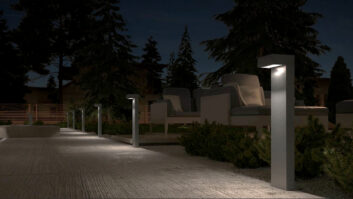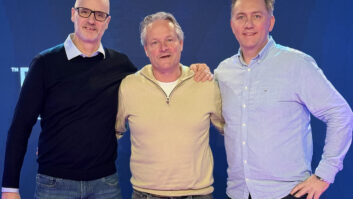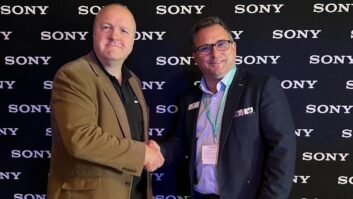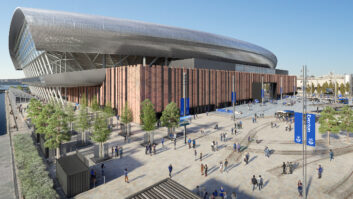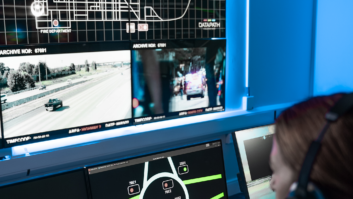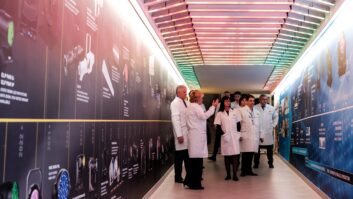On the eve of the CEDIA Business and Technology Forum earlier this month, AWE Europe and IE Residential convened another ‘AWEsome Forum’, this time to discuss trends in residential lighting control systems. Around the table were: Paddy Baker (chair) – editor, IE Residential Will Brocklebank – director and head of technology, Face to Face Digital Simon Buddle – technical director, SMC Philippe Regnier – business development manager, Philips Dynalite Iain Shaw – partner, Brilliant Paul Mott – sales director, AWE Europe
Mal Fisher – training manager, AWE Europe
To begin, we asked the installers present how important lighting control is to their business. Iain Shaw of Brilliant said: “Lighting in its totality – fittings, design, consultancy, M&E work and control systems – is 45% of our revenue. And it’s the nicest 45%, because it’s predictable, it’s manageable, it’s robust and it’s grown-up.” Will Brocklebank of Face to Face Digital pointed out that clients get a lot of benefit from lighting control systems, as they solve real-world problems. “When a mother comes downstairs with her child on her arm at two o’clock in the morning and just wants to heat up a bottle of milk, a lighting control system can make that a little easier,” he said.
SMC’s Simon Buddle agreed on the fundamental importance of lighting control to his business. “Lighting control systems are robust because they have to be,” he observed. “The stuff that breaks is the boys’ toys. If we just sold lighting controls and shades, I could go home on Friday night and not get phoned up until the next customer rang on Tuesday to check if I had one of these systems.” We then moved on to the question of what clients are looking for, from their lighting control systems, what are they expecting, and how much selling needs to be done?
Shaw commented that he found it easier to sell a £20,000 lighting control system than a £20,000 media server system or a £20,000 home automation system. “Lighting control is better, more robust and people just seem to get it really well,” he said.
Brocklebank’s experience was different, though. The views of many of his customers were coloured by bad experience of the technology over the last 15 to 20 years. “They tend to think it’s a real playboy thing, they tend to think it’s all about glass and steel and the 1980s and tiny little buttons with no labels which are impossible to remember what to do with.”
To address this negativity, he said, his company frequently installs systems whose moods and scenes that are called up by contact closure toggle switches rather than keypads.
There was general agreement that simple interfaces were important, whatever form they might take. Shaw recalled a client discussing a shooting lodge project. “He said to me, ‘I only want two scenes in every room: “going out” and “hung over”’. Just because you can get ten buttons on a keypad, it doesn’t mean you want ten buttons.”
Buddle singled out two keypads that had proved popular with his clients. One was a Lutron keypad that also featured temperature and audio controls: “Aesthetically that seems to work for everybody – interior designers, wives, husbands. Everything is here in one keypad.” The other was the Philips Dynalite keypad with integral OLED display.
Dynalite’s Philippe Regnier added: “The display enables features – otherwise you get into complex operating procedures to get to the function you want. With the display you get native feedback, so it makes the understanding of the feature easy.” @page_break@ The discussion moved on to energy efficiency.
Shaw made the point that in the current Building Regulations, Part L does not recognise the value and efficacy of lighting control systems. He added: “You can achieve so much with properly dimmed and nicely controlled halogen. It’s much maligned, but halogen done well can be quite efficient compared to an LED fitting giving the same quality and quantity of light – and the cost isn’t that different.” However, he continued, “The next set of Part L regs should have lighting control recognised – the lighting industry is working with the authors of the next set of Part L regs to address this. I think that is going to be one of the biggest springboards to this market that there is.” Currently, though, how important is energy efficiency to clients?
Buddle said: “Eco is very important to our clients, they’re very much aware of the issues. Although it would make a much bigger difference if they were to control their swimming pool heating or lose a car or two.”
Shaw agreed that other factors tended to dwarf lighting’s contribution to the energy bill. “Lighting efficiency is very important to people, and they do feel passionately about it. But if you do someone’s huge house, and they’ve put in a pool, a spa, a sauna, and servers and amps, then the fact that you’ve managed to get the lighting down isn’t material.”
Brocklebank thought that client attitudes varied at different stages of the job. “A lot of customers have a pretty big carbon footprint… and often they’re creating an enormous new edifice, which has involved the complete destruction of an existing house. So they want to have a really green home, they want it to be eco. Plus it’s going to cost less to run. So you respond to that pitch at the beginning. Whether they ever mention it to you again or not is by the by, really.” There will be more from this AWEsome Forum in the next IE Residential newsletter. www.awe-europe.comwww.brilliantliving.co.ukwww.facetofacedigital.comwww.philips.com/dynalitewww.smc-uk.com


